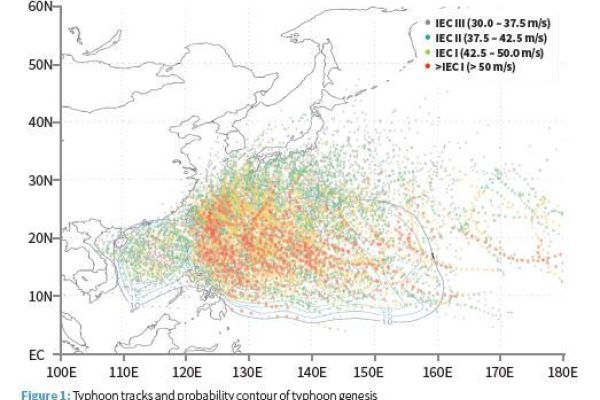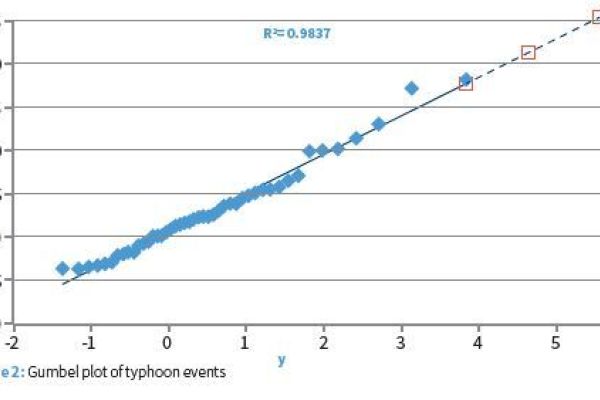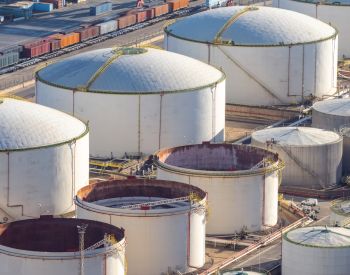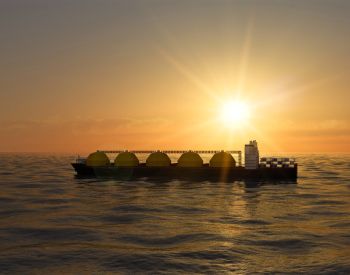Application
Site conditions and extreme wind assessment
Asset
Wind farm
Location
South East Asia
Overview
Typhoons are mature tropical cyclones that result in extremely destructive wind conditions across the East and Southeast Asia region, including Southern China, Taiwan, Japan, the Philippines, Thailand and Vietnam. They can hit at any time of the year, with the months of June to November being the most active, threatening the development of wind farms, particularly offshore.
The background to the project
Lloyd’s Register has worked with numerous clients in the region and performed in-depth extreme wind analyses in order to gain an understanding of the typhoons and the resultant extreme wind conditions.
Our client, a leading wind energy developer in Southeast Asia, operates in one of the most Typhoon-exposed countries in the world. The client wanted to gain a reliable understanding of the destructive extreme wind conditions at one of their sites. In addition, with the complex terrain and non-Weibull wind distribution, the client also wanted to understand the normal wind conditions at each turbine location in order to select the optimal turbine type and layout for the project.
How we helped
Without an accurate estimate of the extreme wind conditions, the risk of destructive typhoons could make the construction of wind farms in the area prohibitive. Not only must the turbines be able to survive the extreme winds brought about by typhoons, they must also be capable of operating efficiently within the complex terrain. An extreme wind assessment was critical in order for both objectives to be achieved.
LR analysed the long-term on-site wind measurements and performed a sophisticated extreme wind analysis using various suitable statistical methodologies, including the Method of Annual Maxima, the Method of Independent Storms, the Poisson
Process model, as well as a typhoon sampling method through an investigation of the typhoon records over the past thirty years (see figure 1 and figure 2). LR also modelled the wind speed distribution of the site area using a Computational Fluid Dynamics (CFD) flow model.

Figure 1

Figure 2
Outcome for the client
LR calculated the hub height 50-year recurrence 10-minute and 3-second extreme wind speeds at each turbine location, along with other normal site conditions including:
- Wind speed distribution
- Ambient and effective turbulence intensity
- Wind shear
- Flow inclination
- Air temperature.
The results provided all the information necessary to mitigate the risk of typhoons and optimise turbine selection for the site in question.
Related Services


